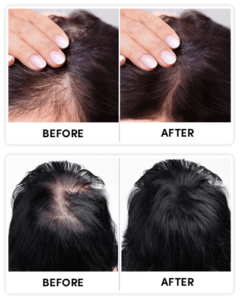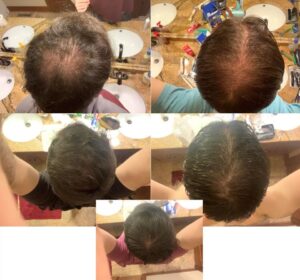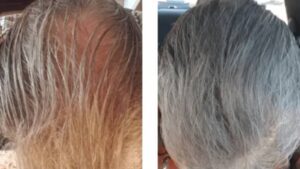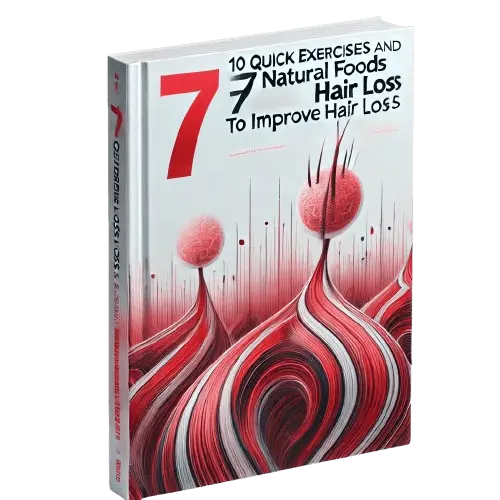Your Ultimate Resource: What HAIR LOSS TREATMENTs Actually Work

Getting to Grips with Hair Loss
Hair loss can be quite a tough pill to swallow, affecting not only how you look but also how you feel about yourself. Whether you're dealing with a slow thinning or more obvious bald spots, it's crucial to understand the ins and outs of what's going on. With so many treatment options out there, the big question on everyone's mind is, "Which hair loss treatments actually do the trick?" Let's dig into the reasons behind hair loss, the treatments available, and the path to reclaiming those beloved locks.
The Lowdown on Hair Loss Causes
Before jumping into treatments, it's essential to get a handle on what triggers hair loss. Genetics is a significant player, with conditions like male and female pattern baldness taking center stage. Hormonal shifts, medical issues, and some medications can also play a part. Pinning down the root cause is key to finding a treatment that works.
Why Jumping on Hair Loss Early Matters
When it comes to hair loss, timing is everything. The quicker you tackle the problem, the more treatment options you'll have up your sleeve. Early action can slow down or even turn back the clock on hair loss, helping you keep that full head of hair for longer.
The Emotional Rollercoaster of Hair Loss
Hair loss isn’t just a change you see in the mirror; it can mess with your head too. Many folks feel anxious or have a dip in their self-esteem. Acknowledging the emotional side of hair loss is as important as addressing the physical symptoms. Support from healthcare pros and loved ones can make a world of difference.
What Really Works for Hair Loss: A Snapshot
When you're on the hunt for effective hair loss treatments, you'll come across a mix of tried-and-true methods and tall tales. Let’s cut through the chatter and zero in on what actually delivers, including FDA-approved treatments and the latest breakthroughs.
FDA-Backed Treatments
The FDA has put certain hair loss treatments through the wringer, ensuring they're both safe and effective. Minoxidil and Finasteride are two such treatments that have shown great promise for many. Knowing how these work can help you make informed choices.
Genetics and Tailor-Made Treatments
Your genes have a big say in how hair loss hits you and how treatments work. Personalized treatments, which take your genetic profile into account, are becoming the norm. Customizing treatments to fit individual needs can boost their effectiveness.
Busting Hair Loss Myths
The world of hair loss is rife with myths. From miracle cures to dodgy advice, it's easy to get led astray. Arming yourself with knowledge about what's real and what's not will empower you to make the right choices.
Watch Your Hair Come Back FASTER Than You EVER Dreamed Possible

WITHOUT Expensive Medications, Lasers, or Painful Surgeries!
Try this at homeTopical Treatments: Minoxidil
Minoxidil is a well-known topical treatment that has helped many people in their battle against hair loss. Available over-the-counter, it's easy to get your hands on and simple to use. Let's dive into how it works and what you can expect.
How Minoxidil Does Its Thing
Minoxidil is a vasodilator, meaning it opens up blood vessels to enhance blood flow. This action helps get more oxygen and nutrients to hair follicles, promoting new growth and slowing down hair loss.
Tips for Using Minoxidil
Consistency is the name of the game with Minoxidil. Apply it as directed, usually twice a day, to see the best results. Patience is your friend here, as it may take a few months to notice any significant changes. And don't forget to wash your hands thoroughly after using it.
Possible Side Effects to Watch For
While Minoxidil is generally safe, some folks might experience side effects like scalp irritation or unwanted facial hair growth. If any adverse effects pop up, it's a good idea to consult a healthcare professional to discuss other options or necessary tweaks.
Prescription Solutions: Finasteride
Finasteride is another popular option for tackling hair loss, available only with a prescription. It's primarily used to combat male pattern baldness. Let's explore how it works and who might benefit most from it.
How Finasteride Works Its Magic
Finasteride works by blocking the conversion of testosterone to dihydrotestosterone (DHT), a hormone that plays a part in hair loss. By lowering DHT levels, Finasteride can slow down hair loss and even encourage regrowth in some cases.
Who Might Want to Try Finasteride
This medication is mainly prescribed for men dealing with pattern baldness. However, women with similar issues might also see benefits, under careful medical supervision. Chatting with a healthcare provider will help you figure out if it's the right fit for you.
Dealing with Side Effects
Like any medication, Finasteride can have side effects, including a dip in libido and potential birth defects if handled by pregnant women. Regular check-ins with your doctor can help manage any concerns and ensure the treatment stays safe and effective.
Why The Ancient Samurai Warriors Never Lost Their Hair…

guaranteed to work for any men or women out there...
Learn moreCutting-Edge Hair Restoration Techniques
Beyond the usual medications, there's a whole new world of innovative techniques offering fresh hope for those dealing with hair loss. Let's take a closer look at some of these groundbreaking methods.
The Buzz on Platelet-Rich Plasma (PRP) Therapy
PRP Therapy involves drawing a small amount of your blood, spinning it to concentrate the platelets, and injecting it into the scalp. This can stimulate hair follicles and promote growth, tapping into the body's natural healing powers.
Low-Level Laser Therapy (LLLT): A Bright Idea
LLLT uses lasers to give hair follicles a boost and encourage growth. It's non-invasive and can even be done at home with special devices. While results can vary, many users find it a handy addition to their hair restoration routine.
Advancements in Hair Transplant Surgery
Hair transplant surgery has come a long way, with techniques like Follicular Unit Extraction (FUE) offering natural-looking results. This method involves transplanting individual hair follicles, which minimizes scarring and shortens recovery time.
Natural Remedies and Lifestyle Tweaks
While clinical treatments can work wonders, natural remedies and lifestyle changes can also support hair health. Let's explore how diet, stress management, and other factors come into play.
Eating Your Way to Healthy Hair
A balanced diet loaded with vitamins and minerals is a must for healthy hair. Nutrients like biotin, zinc, and Omega-3 fatty acids can strengthen hair and support growth. Consider consulting a nutritionist to craft a diet plan that suits your needs.
Stress Less for Better Hair Health
Stress is a common culprit when it comes to hair loss, leading to conditions like telogen effluvium. Incorporating stress-busting activities like meditation, yoga, or regular exercise can have a positive impact on your hair health.
Weighing Up Natural Remedies
While natural remedies can complement clinical treatments, it's wise to approach them with a critical eye. Some may work for certain individuals, but scientific backing is often limited. Consulting with a healthcare professional can help you navigate these options more effectively.
Top Trichologist: Do This To Your Scalp To Regrow A Full Head Of Hair

Completely natural and dirt cheap way that makes it possible for you to finally regrow all your hair back.
Watch free special videoThe Future of Hair Loss Treatments
The world of hair loss treatments is constantly evolving, with ongoing research and technological advancements paving the way for exciting new possibilities.
What's Next: Emerging Tech and Research
New technologies like CRISPR and stem cell research hold promise for future hair loss solutions. These advancements aim to tackle the underlying causes at a genetic level, potentially offering more effective and lasting results.
Personalized Medicine: The Future of Hair Restoration
The shift towards personalized medicine is transforming hair restoration. By tailoring treatments to an individual's unique genetic makeup, we can improve outcomes and cut down on the trial-and-error process.
AI: The New Frontier in Hair Loss Diagnosis
Artificial intelligence is shaking up how we diagnose and treat hair loss. AI-driven tools can analyze hair patterns and predict treatment success, offering more precise and efficient care.
Wrapping It Up: Making Smart Choices
Navigating the hair loss treatment landscape can feel overwhelming. By consulting with healthcare professionals and staying informed, you can make choices that align with your goals and expectations.
Getting Guidance from Healthcare Professionals
A trusted healthcare provider can steer you through the multitude of options, helping you pick the most suitable treatment based on your specific needs and medical history.
Setting Realistic Expectations
Knowing what to expect from hair loss treatments is crucial for satisfaction. While many treatments can yield impressive results, they often require time and patience to see significant improvements.
Keeping an Eye on Long-Term Maintenance
Maintaining healthy hair is an ongoing journey. Regular check-ups and monitoring your progress can ensure that your chosen treatment remains effective, allowing you to enjoy the results for years to come.






